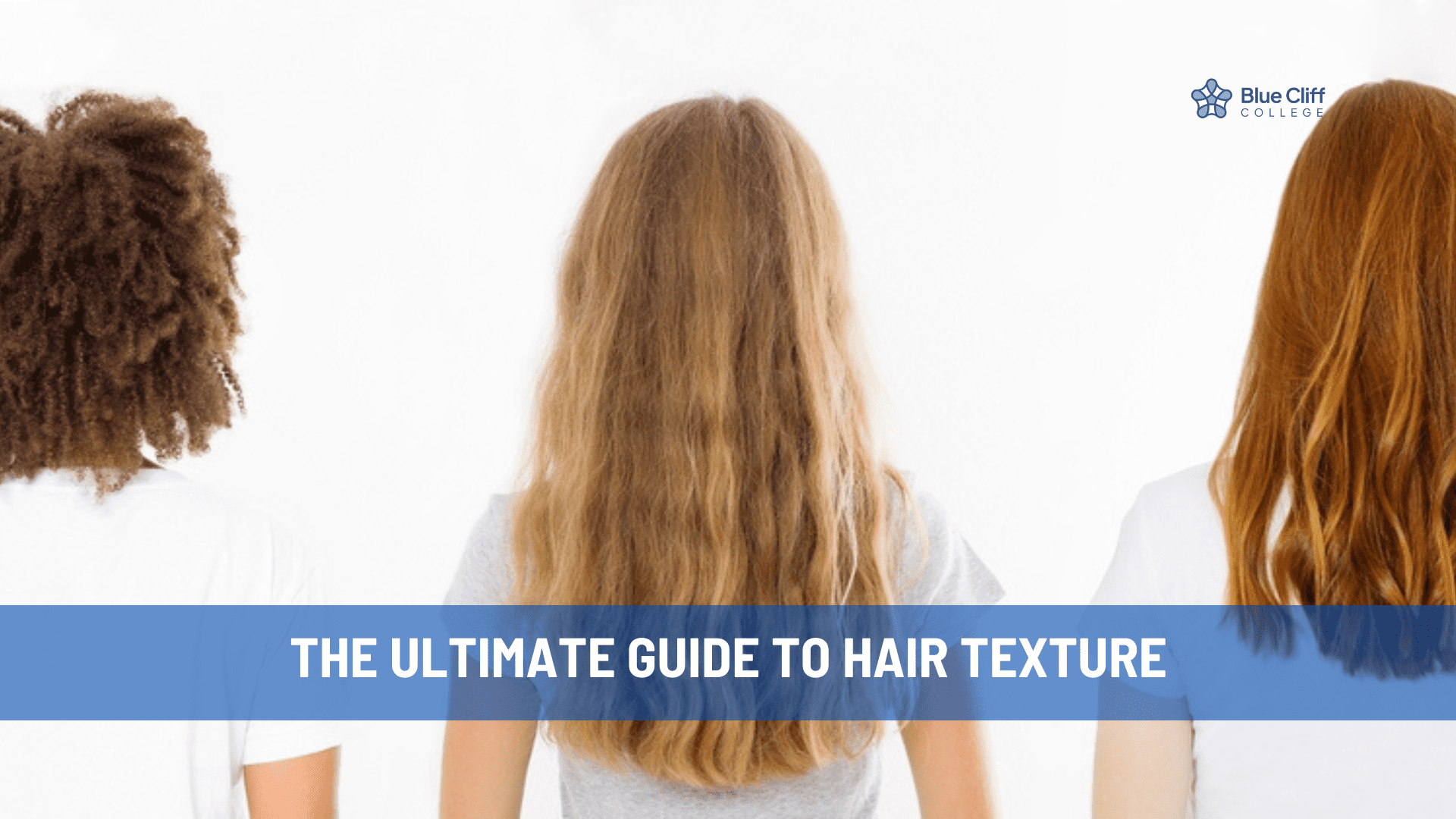Your hair is like a fingerprint. No, really! Not one fingerprint is identical, it’s the reason why our society uses them as a way to identify us. We think your hair is the same way. Not one head of hair is the same … ever. Think about it, your hair isn’t even the same day to day, let alone exactly similar to your best friend’s or mother’s. And because of that, we all have to care for our hair differently. But in order to do so, we need to actually know what our hair type is. In knowing this, we are able to determine what products to use, how to best care for our hair, and ultimately, embrace our hair for what it is (rather than getting frustrated that it doesn’t look like someone else’s.)
Let’s get into some information that will help you determine your hair type and texture once and for all. We’ll discuss everything from common hair type challenges to characteristics and care plans.
What Are Hair Textures and Why Are They Important?
To break it down, hair texture is a comprehensive term often used to describe the thickness of someone’s hair or depth of each individual strand of hair. There are three types of hair textures: coarse, medium, and fine. Knowing your hair texture can lend you a hand in determining what your hair type is. This not only helps you with hair care, but in choosing products that can make ‘good hair days’ more of a regular thing, rather than an uncommon occurrence.
What Are the Four Types of Hair Textures?
Curl pattern is what we are talking about when it comes to your hair type. You either have a lot of curls or none at all. This is determined by your hair follicles which can be:
- Straight
- Wavy
- Curly
- Coily
The curlier your hair, the more likely you are to have oval/asymmetrical hair follicles. This often isn’t something you can permanently change due to the fact that your hair type is genetically determined. Nevertheless, it is possible to alter your curl pattern temporarily by way of heat and chemicals. But, still, your curl pattern is in your DNA. It can’t really change (just like your fingerprint!)
Type 1 (Straight):
If you have straight hair, there is no natural curl in your hair and oftentimes, many hairstyles suit you.
Characteristics
Straight hair types often have individual hair strands that are either fine or coarse and thick or thin. But regardless of the pairing you have, your hair falls without any wave present from root to tip. This hair type is often the most resilient (meaning it’s hard to damage.)
Common Challenges
Despite the fact that straight hair types have a lengthy benefit list, there are some challenges that come with having straight hair. The two most common challenges with straight hair are a lack of volume and oiliness. For this reason, many stylists suggest checking labels to ensure you aren’t adding extra oil to your hair by way of adding heavy serums or butters.
Styling Tips
Because straight hair is more likely to be oily, the scalp sebum spreads more easily from the scalp to the ends of hair follicles. This makes curling straight hair with heating products incredibly difficult. Many stylists say they recommend hairstyles based on hair shape, but chin-length bob cuts work really well for people with straight hair.
Recommended Products
Many stylists recommend that those with straight hair keep a bottle of dry shampoo on hand at all times. When washing your hair too often, it is likely that your scalp will overproduce oils. Because straight hair is predisposed to oiling, dry shampoo is a great tool to soak the oil up when you have no time to take a shower.

Type 2 (Wavy):
Wavy hair is a blend between straight and curly hair. Ranging from very loose ‘S’ loops to tight ‘S’ waves, this hair type becomes curlier from the ears down.
Characteristics
There are 3 different types of type 2 hair:
- 2a – Loose, S-waves
- 2b – Short, succinct S-waves
- 2c – Distinct S-waves with occasional spiral curls
In comparison to the other hair types, type 2’s are generally the least dry due to the scalp’s natural oils and their ability to move through the loose curls easily. Because there is less volume at the roots compared to hair that fully curls and coils, those with wavy hair tend to have less volume.
Common Challenges
If you have wavy hair, you know the headache-inducing pain of frizz. The weather highly impacts the appearance of your hair and curl pattern, so wavy hair often looks different depending upon climate conditions. High humidity days make hair frizzier, whereas dry and cold days make hair more flat.
Styling Tips
Wavy hair can be difficult to style due to its ability to quickly flatten between wash days. Using strong styling products is key to keep your waves lasting longer than 24 hours. It’s also important to not use too many products, as wavy hair is more prone to being weighed down by heavy products.
Recommended Products
A strong hair spray made for wavy hair is key to any good wavy hair care routine. It’s imperative to find a spray or mousse that doesn’t put a coat on your hair, as too much product has the opposite effect and makes your hair dense.


Type 3 (Curly):
Curly hair is often very voluminous and looks like the letter “S” or “Z”. The appearance of curly hair is often dependent on the weather and can become frizzy or damage easily when not properly cared for.
Characteristics
There are three different types of type 3 hair:
- 3a – Loose, big spiral curls
- 3b – Ringlets
- 3c – Corkscrew curls
Due to their tightly curled nature, those with type 3 often have drier hair. Because of this, to maintain their spiral shape, ringlets often need moisturizing products. Curly hair is oftentimes more prone to breakage through styling, due to the unique spiraling nature of hair follicles.
Common Challenges
For those that have curly hair, you know the challenge that comes with hair shrinkage. Your hair is likely to be a couple of inches shorter when worn curly than if it were to be straightened. This is due to the tight coils that take up hair to create. Another challenge of curly hair is tangles. Unlike type 1, where you can run your hands through your strands, curly hair tangles easily due to the hair follicle’s nature to wrap around itself.
Styling Tips
Defining your curls is key to maintaining type 3 hair. You can do this by using products that define your natural curl. There are a couple of big things not to do with curly hair, though. First, ditch the ponytail. While this hairstyle is occasionally okay to wear with curly hair, wearing a ponytail too often can cause thinning, breakage, and hair loss due to the curls formation loss. Secondly, don’t brush your hair once it’s dry. Brushing curly hair causes curl definition loss and instead creates a frizzy mane.
Recommended Products
When choosing products for your curly hair, avoid products that contain silicones and sulfates. These chemicals may temporarily manage your frizz, but they will dry out your hair and lead to damage. The best product you can use for curly hair is a leave-in-conditioner. Built to add back moisture and support your curls, you can apply this by simply raking it through your wet hair with your fingers.

Type 4 (Coily):
Coily hair is so curled that you could, essentially, wrap it around a chopstick. As an S-shaped coil, you have to be very gentle with this hair type as it is prone to breakage and requires lots of moisture.
Characteristics
There are three different types of type 3 hair:
- 4a – Tightly coiled S-curls
- 4b – Tightly coiled, Z-pattern curls
- 4c – Mostly Z-patterned, tightly kinked, and less defined curls
Prone to shrinkage, this type of hair has fewer cuticle layers than other hair types, so it often dries multiple inches shorter.
Common Challenges
A common issue with type 4 hair is its susceptibility to damage. This is due to its limited cuticle layers and tendency to be highly dry. Often found to be very dense, those with coily hair are likely to find that their hair feels heavier.
Styling Tips
For coily hair, it is recommended to be worn in loose, wash-and-go-styles. A popular styling technique, shingling, not only protects your hair from breakage, but also adds a liberal amount of leave-in-conditioner. Both of these styles ensure minimal breakage risk and the frequent ability to lather the hair in moisturizing products.
Recommended Products
When it comes to coily hair products, more is more. At least, in terms of conditioning treatments. More moisturizer doesn’t mean more oils, but rather more butters, creams and conditioning masques that preserve the hair follicles. A greater number of people are ditching shampoo for conditioner-only care.
How to Determine Your Hair Texture
There are a couple of different ways to determine your hair texture. It is important to keep in mind that hair is unique, and not one head of hair is going to be the same. For this reason, it is key to consider individual hair porosity levels, density and thickness prior to naming your hair texture. Here are a couple ways to determine your hair type:
- The strand test: look at a piece of your hair, wet or dry and compare the characteristics to the different hair types found in this blog.
- The curl pattern test: Wet your hair and observe how it naturally dries.
Caring for Your Hair Texture
General tips:
Following a hair care regimen is crucial to maintain the health of your hair, regardless of your hair texture and type. It is important to use hair products that are specific to your hair type, so that you don’t end up making your hair look limp, frizzy, or dull. The goal is to follow a hair care routine that sets you up for success. You can do this in a couple of ways:
- Gentle cleansing
- Deep conditioning
- Protective styling
- Avoiding heat damage
We have a couple of texture-specific pieces of advice that may aid you in finding a routine that best fits you:
- Straight hair: Volumizing products, lightweight oils
- Wavy hair: Anti-frizz serums, mousses for definition
- Curly hair: Leave-in conditioners, curl creams
- Coily hair: Rich moisturizers, oils, and butters
Start Your Career in Recession Free Industry
If you are interested in working with hair and helping people find the best modes of treatment, you might want to check out Blue Cliff College. Known for our comprehensive course work that not only prepares you for the real-world, but equips you with salary-raising certificates, it’s a place where many start their career. Apply today to begin a future in hair care.
FAQs
What if my hair has multiple textures?
Known to be a mix between straight and curly hair, wavy hair can sometimes feel like you are living with multiple hair textures.
How often should I wash my hair?
Hair type plays a big role in determining how often you should wash your hair. However, as a rule of thumb, it’s important to create a routine washing schedule whether it’s two or three times a week.
Are there any hair styles that flatter all textures?
The bob. Stylists swear it looks good on everyone.
What products should I avoid for my hair texture?
This completely depends on your hair texture. If you have straight or wavy hair, avoid heavy moisturizing products as you are more prone to being oily. If you have curly or coily hair, moisturizing products are your best friend.





